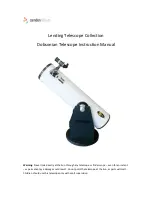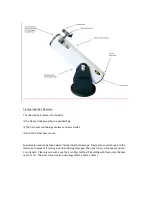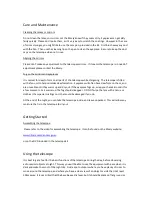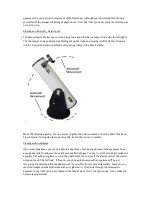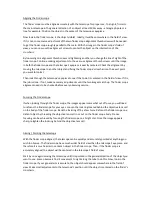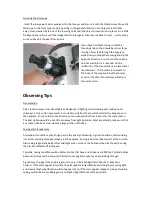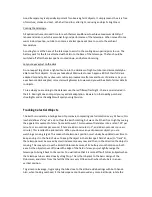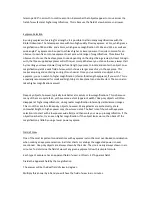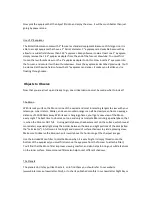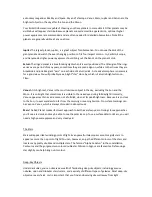
astronomy magazines like Sky and Space, Sky and Telescope. Venus, Mars, Jupiter and Saturn are the
brightest objects in the sky after the Sun and the Moon.
Your Bintel Dobsonian is capable of showing you these planets in some detail. Other planets may be
visible but will appear star-like. Because planets are quite small in apparent size, optional higher
power eyepieces are recommended and are often needed for detailed observations. Not all the
planets are generally visible at any one time.
Jupiter
The largest planet, Jupiter, is a great subject for observation. You can see the disk of the
giant planet and watch the ever-changing positions of its four largest moons – Io, Callisto, Europa,
and Ganymede. Higher power eyepieces should bring out the bands on the planet’s disk.
Saturn
The ringed planet is a breathtaking sight when it is well positioned. The tilt angle of the rings
varies over a period of many years; sometimes they are seen edge-on, while at other times they are
broadside and look like giant “ears” on each side of Saturn’s disk. A steady atmosphere is necessary
for a good view. You will probably see a bright “star” close by, which is Saturn’s brightest moon,
Titan.
Venus
At its brightest, Venus is the most luminous object in the sky, excluding the Sun and the
Moon. It is so bright that sometimes it is visible to the naked eye during full daylight! Ironically,
Venus appears as thin as a crescent, not a full disk, when at its peak brightness. Because it is so close
to the Sun, it never wanders too far from the morning or evening horizon. No surface markings can
be seen on Venus, which is always shrouded in dense clouds.
Mars
The Red Planet makes its closest approach to Earth every two years. During close approaches
you’ll see a red disk, and may be able to see the polar ice cap. To see surface detail on Mars, you will
need a high power eyepiece and very steady air!
The Stars
Stars will appear like twinkling points of light. Even powerful telescopes cannot magnify stars to
appear as more than a point of light! You can, however, enjoy the different colours of the stars and
locate many pretty double and multiple stars. The famous “Alpha Cenaturi” in the constellation
Centaurus and the gorgeous two-colour double star Albireo in Cygnus are favourites. Defocusing a
star slightly can help bring out its colour.
Deep-Sky Objects
Under dark skies, you can observe a wealth of fascinating deep-sky objects, including gaseous
nebulas, open and Globular star clusters, and a variety of different types of galaxies. Most deep-sky
objects are very faint, so it is important that you find an observing site well away from light

